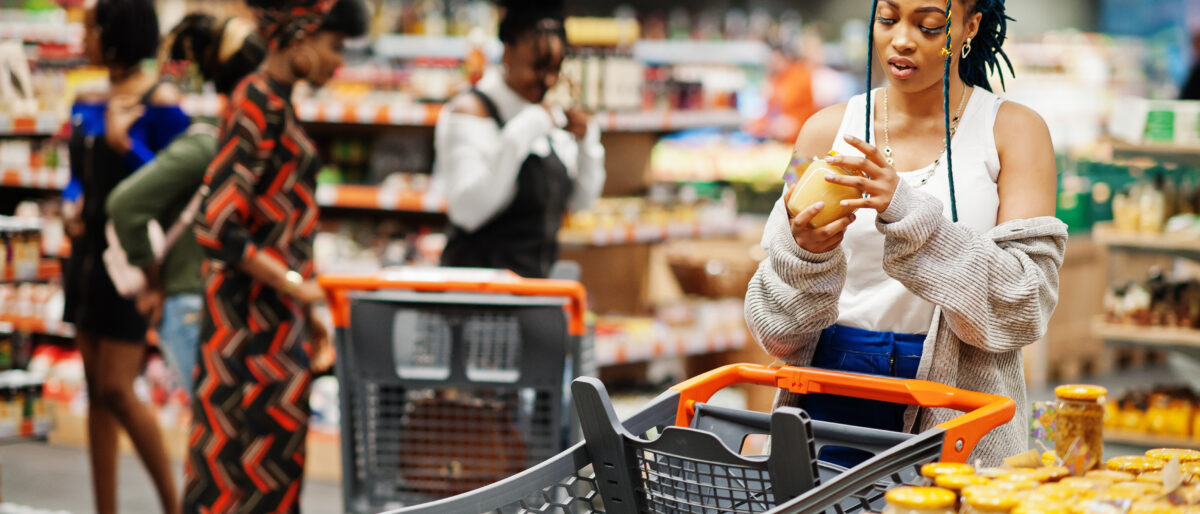
The role of sustainable food packaging in transforming the food system
Whether it be through labelling and communication or through the materials themselves, sustainable food packaging plays an important role in the food system. Here we explore the challenges and solutions.
Why we need sustainable food packaging
What comes to mind when you think of food packaging? Labelling? Food safety? Reduced food waste? Plastic pollution?
Whether your first thought was positive or negative, food packaging exists for many reasons. From preventing harmful contamination and increasing the shelf life of food, to enabling important communication with consumers via on-pack labelling, food packaging is vital for many elements of effective food distribution and safe consumption. Despite this, food packaging is also often associated with being bad for the environment: non-recyclable, contributing to pollution, and emitting large amounts of greenhouse gas (GHG) emissions during production.
On an episode of the Food Fight podcast, the Senior Director of Sustainable Packaging at PepsiCo, Archana Jagannathan, explained that “it's important to realise the benefits of packaging, but, equally, that the waste being generated from packaging today is a real issue.” (1) In fact, it is estimated that the world produces over 78 million tonnes of plastic packaging, with only 14% being recycled (2).
The EIT Food Trust Report 2021 found that 78% of consumers think plastic-free packaging is beneficial for the environment (3). However, consumers also expressed confusion about how to determine whether food products were sustainable when ‘healthy and sustainable foods’ such as organic foods are often wrapped in plastic in supermarkets (3).

What sustainable alternatives are there to food packaging?
Without fundamental redesign and innovation, approximately 30% of plastic will never be reused or recycled (2). Recent initiatives across European supermarkets are increasingly introducing ‘packaging-free’ food products, but for foods that must be packaged, alternative packaging solutions are being scaled across Europe and are making their way to supermarket shelves.
EIT Food RisingFoodStar alum AgriFoodX, for example, is using agrifood by-products such as food waste to develop biodegradable, sustainable, flexible packaging films. These versatile films replace current oil-based plastics and can be used as sustainable food packaging solutions as well as having a range of different applications in the agricultural sector such as weed suppression membranes
On the Food Fight podcast, the Co-Founder of AgriFoodX, Graham Bonwick, said “the main benefit is that the material will break down in the environment and may even contribute to soil health. The material is fully biodegradable, compostable and, theoretically could be left in place at the end of its use instead of having to be collected, cleaned and recycled.” (4) Graham also explained the importance of maintaining the beneficial properties of conventional packaging when developing alternatives, such as durability and longevity (4).
“My message to the entire food industry is that, where possible, we should embrace bio-based packaging materials and other bio-based solutions. This will help the development and achievement of a fully circular economy. We must make sure that all materials used can be reprocessed, recycled or reduced.”
Other biological materials that can be used for plastic-free food packaging include plant-based materials such as seaweed. EIT Food Seedbed alum SoluBlue created an organic polymer that looks and feels like clear plastic. When composted it can biodegrade within weeks and can also be safely ingested by wildlife. The material can also absorb excess moisture from the food it contains, dramatically extending shelf life and reducing food waste. Read more about SoluBlue’s impact in the food system.
Discover more about sustainable food packaging solutions:

Environmental food labelling: the power of on-pack communications
Labelling is an important element of food packaging. Through labelling, packaging enables communication between producers, retailers, and consumers. This enables consumers to make informed decisions about the health, sustainability and origin of their food. What’s more, with the recent progression of initiatives such as Foundation Earth’s environmental labelling system, labelling is increasingly becoming a key route to communicating the environmental impact of food to consumers.
Nominated for the 2022 Earthshot Prize, Foundation Earth has brought together leading organisations to measure the full environmental impact of individual food products and communicate the information clearly and simply to consumers via a front-of-pack labelling score. The initiative hopes to create a fully automated labelling system for use across the UK and EU by the end of 2022.
It is clear food packaging plays an important role in the food system, from increasing shelf life and food safety to enabling effective communication with consumers. This means food packaging has the potential to play a huge role in creating a more sustainable food system if it changes for the better. By supporting entrepreneurs and agrifood businesses to develop and scale solutions, and by communicating clearly with consumers, we can create a circular food system where food packaging never has to be wasted again.
Why not also take a look at some of our relevant online courses?
- Understanding Food Labels: Learn how to interpret food labels so you can make informed food choices and buy food that supports your health and wellbeing.
- Consumer and Environmental Safety: Food Packaging and Kitchenware: Discover the importance of kitchenware and packaging that is safe for people and the environment alike.
- Trust in Our Food: Understanding Food Supply Systems: How much do you trust your food? Learn about food supply systems, safety, sustainability, nutrition and quality.
References
- EIT Food: The Food Fight: Does food need to be packaged?
- Ellen MacArthur Foundation: The New Plastics Economy: Catalysing Action
- EIT Food: The EIT Food Trust Report 2021
- EIT Food: The Food Fight: Spotlight: AgriFoodX on plastic alternatives
More blog posts








